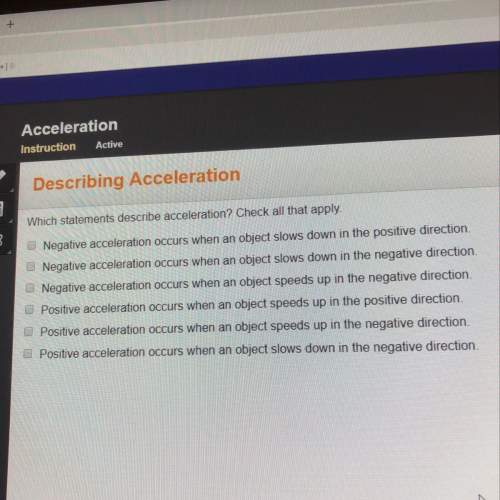
Physics, 21.04.2021 20:30 channarlawassociate
Uppose the human cannonball, David Marvin, wants to create a world record at the AT&T Stadium in Arlington, Tx while the jumbotron (gigantic tv) is down for repairs.
He plans for his cannon to be set up near a goalpost such that when he exits the cannon, he will be directly above one goal crossbar, and he aims to field goal himself on the other side, ie fly between the uprights, in addition to reaching a substantial height in the stadium. Thus, he must adjust the angle and launch speed of his 8 m long cannon, which is currently capable of propelling him to a speed just shy of 75 mph (<-- this is true).
Stadium Notes: Stadium Height = 320. ft (1 ft. = 0.3048 m)
Field length = 120. yds (from goalpost to goalpost) (1 yd = 0.9144 m)
Suppose he is able to tweak his cannon such that it will propel him at a speed of 99.0 mph (1 mph = 0.447 m/s) at an angle of 73.0 degrees. Assuming his landing zone is a 2 m long x 2 m wide x 8 m deep box filled with foam at the far end of the field on the back side of the goal post, and using your knowledge of kinematics and projectile motion, determine whether his plan will be successful by performing the following calculations (imagining David as a cannonball):
1. Motion during launch, before flight:
(a) First, take a guess, will he make it (simple yes or no, no wrong answer, what do you think)?
(b) During launch, what will be the g-force David would experience (similar to in-class example)?
(c) What will be the duration of the launch (not the flight)?
(d) Using the image to the right, which depicts the potential limits of human tolerance as a function of acceleration (g-force), direction of g-force and duration, will he pass out at launch (yes/no/maybe)?
. For example, the blue curve is the max g-force for acceleration upward in the y-direction such that a person would likely pass out at a a sustained 12g for 0.3 s.
Hint: remember his launch angle is 73 degrees which is less than vertical (blue) and greater than 45 degrees (red) curves.
2. Motion during flight, after launch:
(a) How high will he fly?
(b) Analyze: Will he be launched into the roof (yes or no)?
(c) How far will he travel?
(d) Analyze: Will he fly farther than the goalpost (yes or no)?
(e) What will be his height at the crossbar (similar to in-class example)?
(f) Analyze: If the goalposts have regulation dimensions as shown below, Will he clear the cross bar which is at 10 ft high (yes or no)?
(g) Analyze: Will he fly between the top and bottom of the uprights (that is, in the 20 ft span above the crossbar)?
Football Goal Post Dimensions (h) Analyze: Will he land inside the landing zone?

Answers: 1
Another question on Physics

Physics, 22.06.2019 03:40
Aprojectile is launched from ground level with an initial velocity of v 0 feet per second. neglecting air resistance, its height in feet t seconds after launch is given by s equals negative 16 t squared plus v 0 t. find the time(s) that the projectile will (a) reach a height of 192 ft and (b) return to the ground when v 0equals112 feet per second. (a) find the time(s) that the projectile will reach a height of 192 ft when v 0equals112 feet per second. select the correct choice below and, if necessary, fill in the answer box to complete your choice.
Answers: 1

Physics, 22.06.2019 05:30
Blank liquids and gases exert a buoyant force on objects placed in them
Answers: 3


Physics, 22.06.2019 14:20
Antireflective coatings on solar cells are often made by applying a thin film of silicon nitride (sinx), which has an index of refractive of 1.2, on the top of the silicon solar cell, which has a refractive index of about 3.5. however, the sun emits radiation of various wavelengths which the solar cell absorbs, and the antireflective coating can only absolutely minimize the reflection of one of these wavelengths. the coating thickness is chosen to reduce the reflection of green/yellow light (e = 2.2 ev), which is the most intense color in the solar spectrum (shown below). which of the following coatings would minimize reflection of green/yellow light? the answer is 820 nm how? what is the angular width of the central maximum of an electron traveling at 2 x 108 m/s going through a single slit of width 1 mm.
Answers: 1
You know the right answer?
Uppose the human cannonball, David Marvin, wants to create a world record at the AT&T Stadium in...
Questions


Geography, 21.04.2020 17:58

Mathematics, 21.04.2020 17:58

Mathematics, 21.04.2020 17:58


History, 21.04.2020 17:58



Chemistry, 21.04.2020 17:58



Physics, 21.04.2020 17:58




Mathematics, 21.04.2020 17:58



Mathematics, 21.04.2020 17:58





